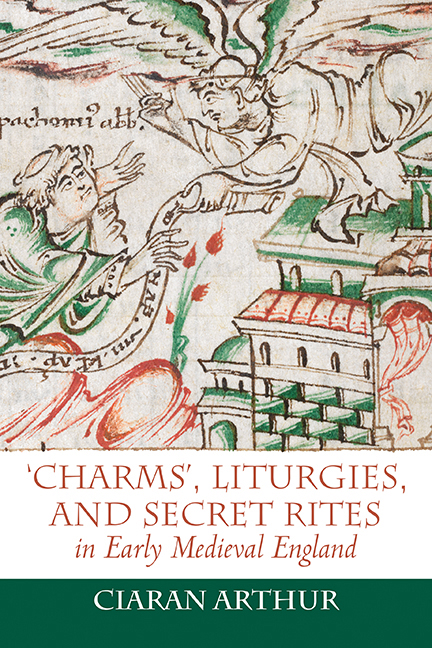Book contents
4 - Crops and Robbers: A Case Study of the Vitellius Psalter
from Part II
Published online by Cambridge University Press: 27 July 2018
Summary
‘they were concerned with transmitting and concealing the sacred, the wisdom inaccessible to those unable to decode it… [and] secrets open only to those who are able to discover and then apply their codes, in order to disclose their mysteries’.
Having demonstrated that it is more beneficial to consider ‘charms’ as part of diverse, mainstream ecclesiastical traditions, it is now important to consider how these rituals appear in their manuscripts. Editors of the ‘charms’ extracted texts from a large number of manuscripts for their editions. The rituals have therefore been isolated from their manuscript contexts, and their many connections with surrounding texts in the manuscripts have been overlooked. Reading these rituals alongside other texts in their manuscripts uncovers intertextual relationships that exist between diverse materials. This approach challenges modern distinctions between textual genres because it exposes (sometimes surprising or obscure) connections between different types of texts that were made by medieval scribes and compilers. In order to understand how Anglo-Saxon scribes viewed these rituals, it is necessary to resituate the ‘charms’ in their respective manuscript contexts.
Some scholars have already conducted case studies of these rituals in their surrounding manuscript contexts. Stephanie Hollis analysed four manuscripts containing different versions of three cattle-theft ‘charms’ (in Cambridge, Corpus Christi College, MSS 41, 383; London, British Library, MS Cotton Tiberius A. iii; and Rochester, Cathedral Library, MS A.3.5). Lea Olsan has provided an overview of how some ‘charms’ are copied in manuscripts, and suggested that they were first recorded as marginalia before they were included in the main body of the manuscript page. Rebecca Fisher has also investigated some ‘charms’ in the Royal Prayerbook (London, BL, Royal 2 A. xx), and argued that they are closely related to surrounding devotional materials for a female religious community in the early ninth century. Other studies of Bald's Leechbook, Harley 585, and Corpus 41 have highlighted correspondences between ‘charms’ and their surrounding texts. However, all of these studies maintain that ‘charms’ form a distinct genre that was differentiated from other ritual practices by Anglo-Saxon scribes. Some scholars have challenged such distinctions in individual case studies of manuscripts.
- Type
- Chapter
- Information
- 'Charms', Liturgies, and Secret Rites in Early Medieval England , pp. 134 - 166Publisher: Boydell & BrewerPrint publication year: 2018

